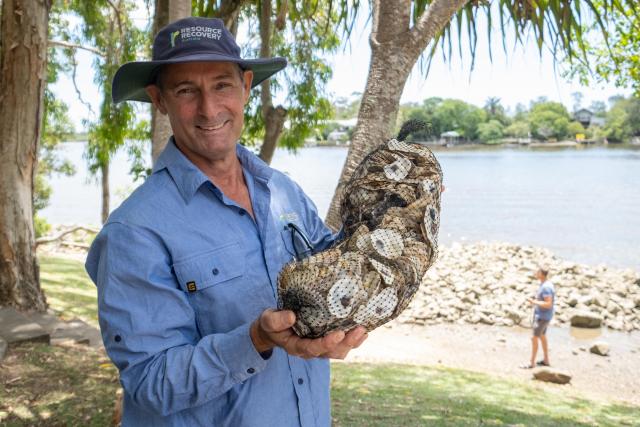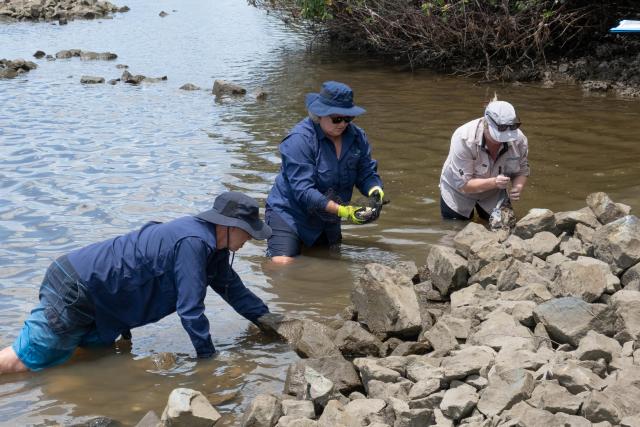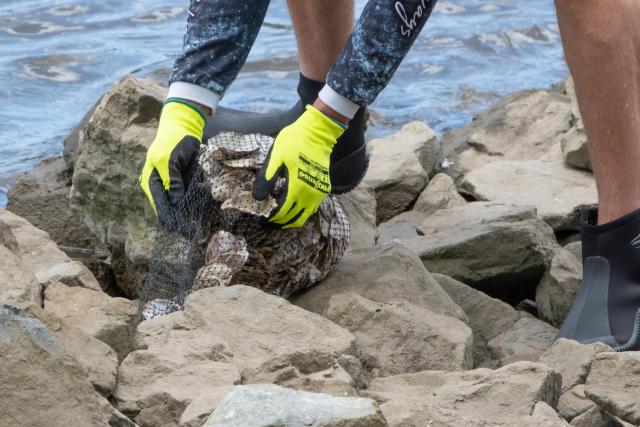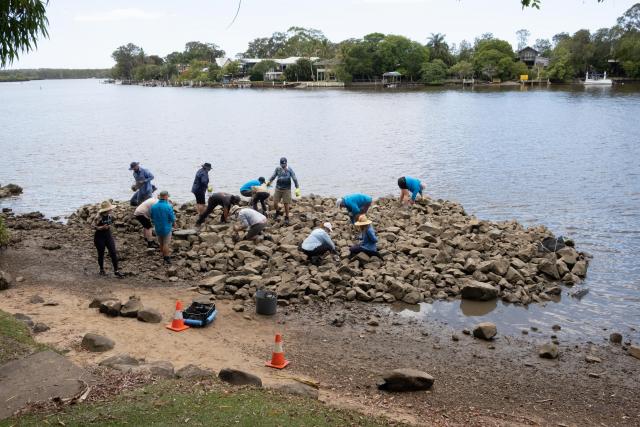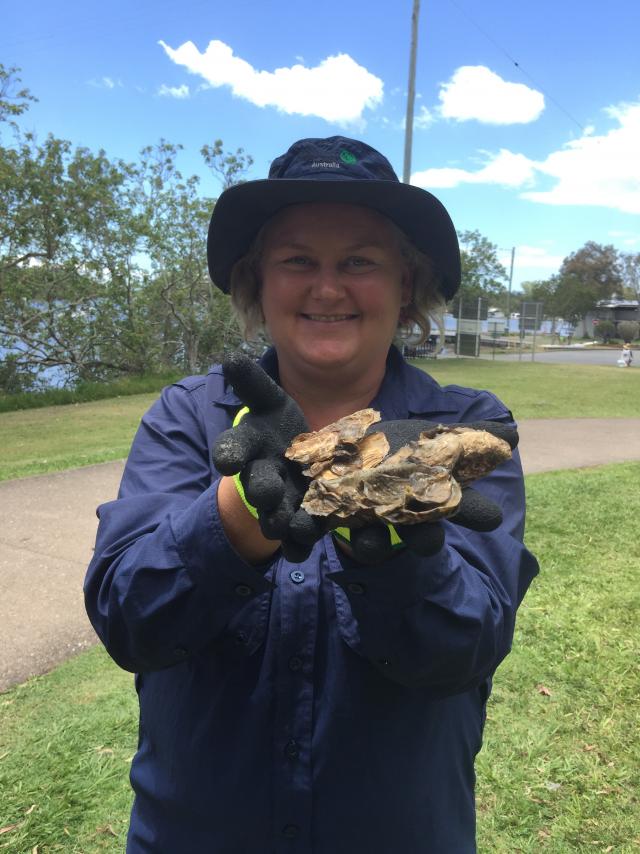After three years and $3.6million the Noosa River oyster restoration project took a significant step last Friday when scientists from Bribie Island Research Centre joined The Nature Conservancy (TNC) and local volunteers to seed recently created reefs at its restored Tewantin site with oyster spat.
A group of about 20 participated in the historic occasion to seed Sydney rock oysters for the first time ever in a river.
Nine months ago a brood stock of adult, naturally occurring Noosa River oysters, Saccostrea glomerata, better known as Sydney rock oysters, were harvested from the Noosa River and taken to the Bribie Island Research Centre for spawning in laboratory conditions.
At the same time local restaurants collected and donated hundreds of oyster shells which were cleaned and prepared by a team of volunteers in readiness for the oyster spat.
Senior research scientist Max Wingfield said the oysters which are spring season spawners were held in controlled tanks at the research station and fed a diet of five varieties of carefully prepared micro-algae.
“We have to culture the algae. It’s nearly as much work growing the micro-algae in laboratory conditions, making sure there are no bacteria,“ he said.
Oysters spawn by releasing a gonad that is either egg or sperm. While the fertilisation process occurs naturally in the river it’s important to manage the fertilisation in a tank as the presence of too much sperm attempting to fertilise an egg can void the process, Max said.
The young oyster larvae hatch about an hour after fertilisation and within 24 hours have gone through the larval stage to already resemble an oyster but at a size of only 70 microns.
Over about three weeks they increase to about 320 microns and grow a foot enabling them to crawl rather than swim. Then they move to a shell, find a place to attach and never move again, he said.
Last Friday 40 bags of oyster shells, each containing about 320 shells with each shell carrying about 10 oyster spat, adding up to about 280,000 oyster spat were seeded in the reef.
Scientists and volunteers carefully placed the spat-filled oyster shells within the crevices between the rocks.
So far they’ve had a nice diet delivered to them but the filter feeders will now fend for themselves.
“That’s what oysters are good at. They filter food for nutrition, cleaning the water in the process,“ Max said.
“It’s good for the environment on both fronts – cleaning the water and providing habitat and refuge for other species of invertebrates and fish.“
TNC will take over monitoring of the oysters from the research scientists.
TNC’s Megan Connell said the oysters would mature over 12-18 months, become adult Sydney rock oysters in three years with the colony expected to continue to reproduce and expand across the restoration site.

